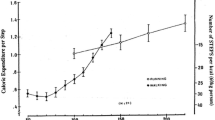Abstract
Pedometers (step counters) are inexpensive devices for obtaining naturalistic activity measurements. The existing reliability literature on pedometers is inconsistent. This article presents reasons for the disparity including (a) distinguishing between instrument reliability (Experiment 1) and clinical repeatability (Experiments 2–4) and (b) discussing methods of evaluating the reliability of activity measuring instruments. Experiment 1 shows that pedometer measurements have an uncertainty of approximately 5% (the test-retest correlational equivalent of .97) under laboratory conditions. Experiment 2 shows that pedometer measurements in college students walking a measured half-mile have approximately the same uncertainty. Experiment 3 shows that pedometer measurements from normal children walking a measured half-mile have an uncertainty of approximately 18% (the correlational equivalent of .91), while measurements from mildly hyperactive children have an uncertainty of approximately 29% (the correlational equivalent of .84). Experiment 4 shows that electronic step counters have an uncertainty of approximately 9% in normal and mildly hyperactive children and about 12% in clinically hyperactive children.
Similar content being viewed by others
References
Conners, C. K. (1969). A Teacher Rating Scale for use in drag studies with children.American Journal of Psychiatry, 126, 884–888.
Conners, C. K. (1973). Rating scales. InPsychopharmacology Bulletin: Special issue on pharmacotherapy of children. Washington, DC: NIMH, Government Printing Office.
Cronbach, L. J., Gleser, G. C., Nanda, H., & Rajaratnam, N. (1972).The dependability of behavioral measurements: Theory of generalizability for scores and profiles. New York: Wiley.
Epstein, S. (1979). The stability of behavior. I. On predicting most of the people much of the time.Journal of Personality and Social Psychology, 37, 1097–1126.
Epstein, S. (1980) The stability of behavior. II. Implications for psychological research.American Psychologist, 35, 790–806.
Garabrant, D. H., Peters, J. M., Mack, T. M., & Bernstein, L. (1984). Job activity and colon cancer risk.American Journal of Epidemiology, 119, 1005–1014.
Garrow, J. S. (1986). Physiological aspects of obesity. In K. D. Brownell & J. P. Foreyt (Eds.),Handbook of eating disorders: Physiology, psychology, and treatment of obesity, anorexia, and bulimia. (pp. 45–62). New York: Basic Books.
Gayle, R., Montoye, H. J., & Philpot, J. (1977). Accuracy of pedometers for measuring distance walked.Research Quarterly, 48, 632–636.
Gerhardsson, M., Norell, S. E., Kiviranta, H., Pedersen, N. L., & Ahlbom, A. (1986). Sedentary jobs and colon cancer.American Journal of Epidemiology, 123, 775–780.
Gottfries, C. G., Gottfries, L., & Olsson, E. (1966). Objective recording of arm and leg activity in normal and clinical samples.British Journal of Psychiatry, 112, 1269–1278.
Goyette, C. H., Conners, C. K., & Ulrich, R. F. (1978). Normative data on revised Conners Parent and Teacher Rating Scales.Journal of Abnormal Child Psychology, 6, 221–236.
Heiser, J. R., Epstein, L. H., & Wing, R. R. (1981). Technical reliability of pedometers.The Behavior Therapist, 4, 21–22.
Hunter, J. E., & Schmidt, F. L. (1990)Methods of meta-analysis: Correcting error and bias in research findings. Newbury Park, CA: Sage.
Plomin, R., & Foch, T. T. (1980). A twin study of objectively assessed personality in childhood.Journal of Personality and Social Psychology, 39, 680–688.
Quay, H. C., & Peterson, D. R. (1987).Manual for the Revised Behavior Problem Checklist. University of Miami, Coral Gables, FL.
Redmond, D. P., & Hegge, F. W. (1985). Observations on the design and specification of a wrist-worn human activity monitoring system.Behavior Research Methods, Instruments, & Computers, 17, 659–669.
Saunders, K. G., Goldstein, M. K., & Stein, G. H. (1978). Automated measurement of patient activity on a hospital rehabilitation ward.Archives of Physical Medicine and Rehabilitation, 59, 255–257.
Schulman, J. L., & Reisman, J. M. (1959). An objective measure of hyperactivity.American Journal of Mental Deviance, 64, 455–456.
Shavelson, R. J., Webb, N. M., & Rowley, G. L. (1989). Generalizability theory.American Psychologist, 44, 922–932.
Slattery, M. L., Schumacher, M. C., Smith, K. R., West, D. W. & Abd-Elghany, N. (1988). Physical activity, diet, and risk of colon cancer in Utah.American Journal of Epidemiology, 128, 989–999.
Slattery, M. L., Jacobs, D. R., Jr., & Nichaman, M. Z. (1989). Leisure time physical activity and coronary heart disease death: The US railroad study.Circulation, 79, 304–311.
Stunkard, A. E. (1958). Physical activity, emotions, and human obesity.Psychosomatic Medicine, 20, 366–372.
Stunkard, A. (1960). A method of studying physical activity in man.American Journal of Clinical Nutrition, 8, 595–601.
Tryon, W. W. (1985). Measurement of human activity. In W. W. Tryon (Ed.),Behavioral assessment in behavioral medicine (pp. 200–256). New York: Springer.
Tryon, W. W. (1986). Motor activity measurements and DSM-III.Progress in Behavior Modification, 20, 36–66.
Tryon, W. W. (1989). Behavioral assessment and psychiatric diagnosis. In H. Hersen (Ed.),Innovations in child behavior therapy (pp. 35–56). New York: Springer.
Tryon, W. W. (1991a). Motor activity and DSM-III-R. In M. Hersen and S. M. Turner (Eds.),Adult psychopathology and diagnosis. New York: Wiley (in press).
Tryon, W. W. (1991b).Behavioral measurement of activity: Obtaining stable clinical values (submitted for publication).
Tryon, W. W. (1991c).Activity measurement in psychology and medicine. New York: Plenum.
Washburn, R., Chin, M. K., & Montoye, H. J. (1980) Accuracy of pedometer in walking and running.Research Quarterly for Exercise and Sport, 51, 695–702.
Winer, B. J. (1971).Statistical principles in experimental design (2nd ed.). New York: Wiley.
Author information
Authors and Affiliations
Rights and permissions
About this article
Cite this article
Tryon, W.W., Pinto, L.P. & Morrison, D.F. Reliability assessment of pedometer activity measurements. J Psychopathol Behav Assess 13, 27–44 (1991). https://doi.org/10.1007/BF00960737
Accepted:
Issue Date:
DOI: https://doi.org/10.1007/BF00960737




